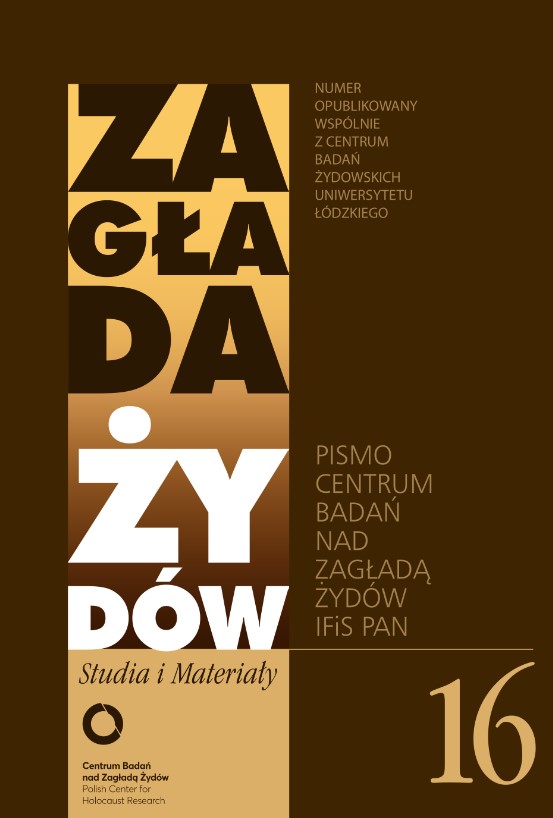Ruch hachszarowy w getcie łódzkim 1940–1941 w świetle dokumentów
The Hakhshara Movement in the Łódź Ghetto 1940–1941 in Light of Documents
Author(s): Ewa WiatrSubject(s): Jewish studies, Agriculture, Local History / Microhistory, Social history, Labor relations, WW II and following years (1940 - 1949)
Published by: Stowarzyszenie Centrum Badań nad Zagładą Żydów & IFiS PAN
Keywords: Łódź ghetto; youth organizations; Hakhshara movement; youth kibbutzim; Jewish administration in the ghetto; forced labor;
Summary/Abstract: This article is devoted to the Hakhshara programs operating during the first months of the Łódź ghetto’s existence. A few dozen groups associating Jewish youth were formed on abandoned farms in Marysin in the summer of 1940. They were formally incorporated into the Agricultural Department, which operated within the framework of the Jewish administration of the ghetto. They were divided into two types. Those named with letters associated people connected with Zionist Halutz organizations, that is, those who were preparing to play the role of pioneers in Palestine. By contrast, those marked with Roman numerals associated young people from very different milieus. Referred to in documents as kibbutzim, the groups were headed by boards elected by their members. They organized work on the farms on which the buildings they occupied were situated and they conducted cultural and sports activity. The level of those group’s independence decreased in the late autumn of 1940. Aside from internal conflicts the factors which contributed to the fall of the Hakhshara movement were the worsening food supply in the ghetto (growing shortages of foodstuffs) and the necessity to organize the Departments of Labor, to which directed were the young people from Marysin.
Journal: Zagłada Żydów. Studia i Materiały
- Issue Year: 2020
- Issue No: 16
- Page Range: 55-82
- Page Count: 28
- Language: Polish

